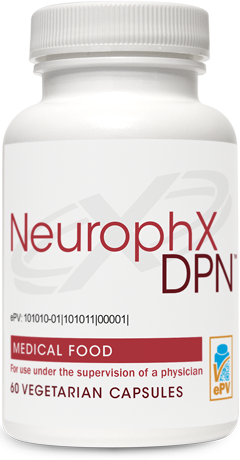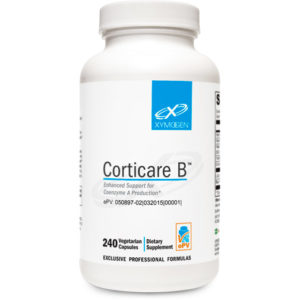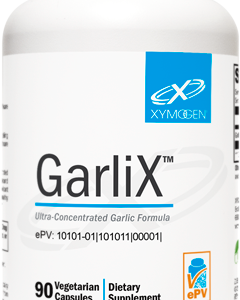Scientific Information/Data
NeurophX DPN® is specially designed to support the function of the microvasculature and the health of peripheral nerves. Bioactive B vitamins, provided in clinically proven levels, influence homocysteine metabolism and oxidative stress to positively impact the production of nitric oxide (NO) and support healthy endothelial function. All of these factors play vital roles in supporting the flow of blood and oxygen to peripheral nerves.
The underlying pathology of peripheral neuropathy involves a complex interaction between vascular (e.g., nitric oxide) and metabolic factors (e.g., hyperglycemia, hyperhomocysteinemia) that converges on nerves and the endothelium of the peripheral microvasculature.[1-5] In addition, increased oxidative stress is a unifying factor seen in the etiologic pathways.[6] Patients suffering from peripheral neuropathy can present with loss of protective sensation, neuropathic pain, and, in some cases, lower extremity ulcerations
NeurophX DPN® combats oxidative stress, and it supports blood flow by promoting healthy endothelial function and facilitating the production of nitric oxide (NO)—a potent vasodilator naturally synthesized in the body. NO is required in blood vessels to relax smooth muscle cells. Relaxation of vascular smooth muscle allows blood vessels to expand and blood to flow freely. Healthy blood flow in the microvasculature facilitates the delivery of essential nutrients and oxygen to the peripheral nerves, which, in turn, allows them to perform normal functions
5-Methyltetrahydrofolate (5-MTHF) 5-MTHF is the primary biologically active isomer of folate. Unlike supplementary folic acid, which requires enzymatic reduction by the methylenetetrahydrofolate reductase enzyme (MTHFR) to become biologically active, 5-MTHF is able to penetrate cellular membranes without being metabolized. This is important because a segment of the population is unable to effectively convert folate to 5-MTHF due to a genetic polymorphism
Therapeutically, 5-MTHF is used to reduce homocysteine levels and toimprove vascular endothelial function through its influence on NO. Clinical studies have shown that direct supplementation with 5-MTHF reduces homocysteine levels and increases plasma folate levels more effectively than folic acid. Folic acid supplementation alone has not been shown to reduce intracellular homocysteine. Inborn genetic variations (polymorphisms) in the MTHFR gene are the most common genetic causes for elevated homocysteine levels. Furthermore, research has shown racemic 5-MTHF to be seven times more bioavailable than folic acid.[7] In other research, (6S)- 5-MTHF was more effective than folic acid in increasing total plasma folate concentrations in subjects with the TT and CC genotype of the 677C→T mutation of MTHFR.[8]
5-MTHF has beneficial effects on endothelial function and vascular superoxide production because it prevents peroxynitrite-mediated oxidation of tetrahydrobiopterin (BH4) and improves endothelial NO synthase (eNOS) coupling.[9,10] Reduced levels of tetrahydrofolate contribute to uncoupling, and uncoupling turns NO synthase into a superoxide radical-producing enzyme.[4] The effect of local, intra-arterial administration of 5-MTHF on the forearm blood flow of 23 patients was studied.[11] 5-MTHF improved NO-mediated vasodilation (from 53+/-30 to 88+/-59 M/C%, < 0.05). This suggests that 5-MTHF can be used to improve NO status and support healthy endothelial function.[4,10] Folate/5-MTHF has been found to exert direct antioxidative effects—against superoxide and peroxynitrite, for instance—and contribute to the restoration of impaired NO metabolism.[4,12]
Quatrefolic® In NeurophX DPN, 5-MTHF is provided as Quatrefolic, the glucosamine salt of 5-MTHF. Quatrefolic is a new dietary ingredient (NDI) that shows enhanced stability and bioavailability when compared to the calcium salt form of 5-MTHF. In a direct comparison between Quatrefolic, (6S)-5- methyltetrahydrofolate calcium salt, and folic acid in rats, Quatrefolic demonstrated a much higher absorption rate within the first two hours (1918.8, 1061.9, and 614.0 nmol/l plasma, respectively).[13] In a single-dose, balanced, two-sequence, two-period, two-treatment, randomized, crossover human study, Quatrefolic showed better bioavailability (+10%) than (6S)-5- MTHF calcium salt (Ca-L-5-MTHF).[14]
Vitamins B6 and B12 These B vitamins are provided in their activated forms—pyridoxal 5’-phosphate (P5P) and methylcobalamin—for optimal bioavailability. They are required for synthesis of nerve-signaling molecules (amines) and for facilitation of the body’s normal nerve repair mechanisms, including the production of the myelin sheath—the lipid-enriched membrane that insulates and protects nerve fibers and enhances nerve impulse conduction. B6 and B12 are commonly used in combination with folate to support healthy homocysteine metabolism. Both animal and human studies have demonstrated an inverse correlation between homocysteine levels and endothelial function, perhaps through impairment of vasodilation mediated by endothelium-derived NO.[9,1]
P5P-dependent enzymes are involved in many biochemical reactions, including the transsulfuration of homocysteine and decarboxylation of amino acids that yield biogenic amines (neurotransmitters). Research suggests that P5P may inhibit formation of advanced glycation end products and has a protective effect under homocysteine-induced oxidative stress.[16-18]
Methylcobalamin is provided as MecobalActive™, a highly pure form of patented methylcobalamin that does not use any harmful solvents in manufacturing. Methylcobalamin’s neuroprotective effects may be mediated by the methylation cycle. The combination of supplemental folate and vitamin B12 has been shown to reduce homocysteine more than folic acid alone. Clinical trials suggest the combination of 5-MTHF, P5P, and methylcobalamin can reduce symptoms of neuropathy. Furthermore, research has demonstrated that B12 acts as an efficient intracellular superoxide scavenger and improves glutathione redox status.[19,20]
*Medical foods are “intended for the specific dietary management of a disease or condition for which distinctive nutritional requirements, based on recognized scientific principles, are established by medical evaluation” (section 5(b)(3) of the Orphan Drug Act (21 U.S.C. 360ee(b)(3)). Such patients may have a limited or impaired capacity to ingest, digest, absorb, or metabolize ordinary foodstuffs or certain nutrients, or have other special medically determined nutrient requirements that cannot be achieved by modification of the normal diet alone.
References
1. Jianbo L, Yuche C, Ming S, et al. Association of homocysteine with peripheral neuropathy in Chinese patients with type 2 diabetes. Diabetes Res Clin Pract. 2011 Jul;93(1):38-42. [PMID: 21481484]
2. González R, Pedro T, Martinez-Hervas S, et al. Plasma homocysteine levels are independently associated with the severity of peripheral polyneuropathy in type 2 diabetic subjects. J Peripher Nerv Syst. 2012 Jun;17(2):191-96. [PMID: 22734904]
3. Hartge MM, Unger T, Kintscher U. The endothelium and vascular inflammation in diabetes. Diab Vasc Dis Res. 2007 Jun;4(2):84-88. [PMID: 17654441]
4. Stanger O, Weger M. Interactions of homocysteine, nitric oxide, folate and radicals in the progressively damaged endothelium. Clin Chem Lab Med. 2003 Nov;41(11):1444-54. [PMID: 14656024]
5. Veves A, Akbari CM, Primavera J, et al. Endothelial dysfunction and the expression of endothelialnitric oxide synthetase in diabetic neuropathy, vascular disease, and foot ulceration. Diabetes. 1998 Mar;47(3):457-63. [PMID: 9519754]
6. Shakeel M. Recent advances in understanding the role of oxidative stress in diabetic neuropathy. Diabetes Metab Syndr. 2014 Jun 16. pii: S1871-4021(14)00041-1. [PMID: 25470637]
7. Willems FF, Boers GH, Blom HJ, et al. Pharmacokinetic study on the utilisation of 5-methyltetrahydrofolate and folic acid in patients with coronary artery disease. Br J Pharmacol. 2004 Mar;141(5):825-30. [PMID: 14769778]
8. Prinz-Langenohl R, Brämswig S, Tobolski O, et al. [6S]-5- methyltetrahydrofolate increases plasma folate more effectively than folic acid in women with the homozygous or wild-type 677C→T polymorphism of methylenetetrahydrofolate reductase. Br J Pharmacol. 2009 Dec;158(8):2014-21. [PMID: 19917061]
9. Cheng Z, Yang X, Wang H. Hyperhomocysteinemia and endothelial dysfunction. Curr Hypertens Rev. 2009 May 1;5(2):158-65. [PMID: 20495681]
10. Antoniades C, Shirodaria C, Warrick N, et al. 5-methyltetrahydrofolate rapidly improves endothelial function and decreases superoxide production in human vessels: effects on vascular tetrahydrobiopterin availability and endothelial nitric oxide synthase coupling. Circulation. 2006 Sep 12;114(11):1193-201. [PMID: 16940192]
11. van Etten RW, de Koning EJ, Verhaar MC, et al. Impaired NOdependent vasodilation in patients with Type II (non-insulindependent) diabetes mellitus is restored by acute administration of folate. Diabetologia. 2002 Jul;45(7):1004-10. [PMID: 12136399]
12. Jacobs AM, Cheng D. Management of diabetic small-fiber neuropathy with combination L-methylfolate, methylcobalamin, and pyridoxal 5’-phosphate. Rev Neurol Dis. 2011;8(1-2):39-47. [PMID: 21769070]
13. Quatrefolic® Bioavailability in Rats. [available from the manufacturer Gnosis S.p.A. upon request]
14. Crossover Comparative Bioavailability Study of 5-Methyltetrahydrofolate Glucosamine Salt (GN10G) Compared to the Reference Metafolin® in Healthy Volunteers. IPAS-5MTHFA-583-09 final report. Desio, Italy: Gnosis S.p.A.; March 15, 2010: 1-33. [available from the manufacturer Gnosis S.p.A. upon request]
15. Austin RC, Lentz SR, Werstuck GH. Role of hyperhomocysteinemia in endothelial dysfunction and atherothrombotic disease. Cell Death Differ. 2004 Jul;11 Suppl 1:S56-64. [PMID: 15243582]
16. Polizzi FC, Andican G, Çetin E, et al. Increased DNA-glycation in type 2 diabetic patients: the effect of thiamine and pyridoxine therapy. Exp Clin Endocrinol Diabetes. 2012 Jun;120(6):329-34. [PMID: 22231921]
17. Miyazawa T, Nakagawa K, Shimasaki S, et al. Lipid glycation and protein glycation in diabetes and atherosclerosis. Amino Acids. 2012 Apr;42(4):1163-70. [PMID: 20957396]
18. Hsu CC, Cheng CH, Hsu CL, et al. Role of vitamin B6 status on antioxidant defenses, glutathione, and related enzyme activities in mice with homocysteine-induced oxidative stress. Food Nutr Res. 2015 Apr 29;59:25702. [PMID: 25933612]
19. Moreira ES, Brasch NE, Yun J. Vitamin B12 protects against superoxide-induced cell injury in human aortic endothelial cells. Free Radic Biol Med. 2011 Aug 15;51(4):876-83. [PMID: 21672628]
20. Frye RE, Melnyk S, Fuchs G, et al. Effectiveness of methylcobalamin and folinic acid treatment on adaptive behavior in children with autistic disorder is related to glutathione redox status. Autism Res Treat. 2013;2013:609705. [PMID: 24224089]







Reviews
There are no reviews yet.